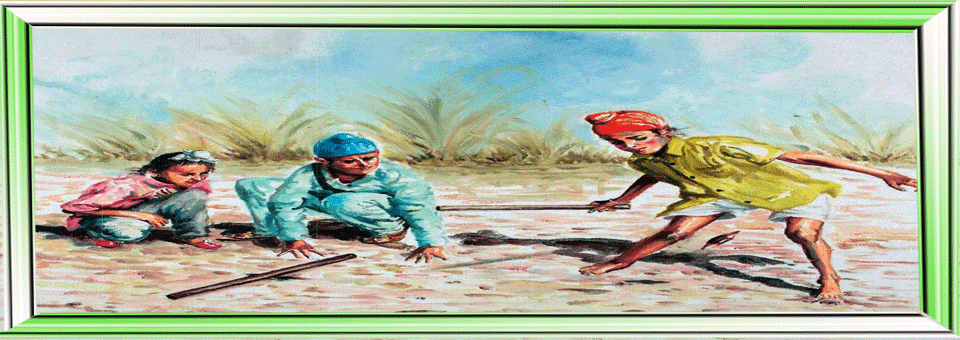Introduction:
Punjab, is one of the most vibrant, dynamic and culturally rich north western states of India, where people especially village women use their time productively by engaging themselves with various crafts
The art of phulkari has its origins in the early part of the 19th century when the odhini or head cloth was hoghlighted with embroidered flowers. Phulkari, literally flower-crafting, comprises of the colourful embroidery that originates from Punjab. Over the years this embroidery became heavy and the work more complex and the heavily embroidered odhinis came to be known as bagh (literally garden). In this style the embroidery covered every inch of the entire base material so that the cloth was completely invisible.
.
Phulkari being one of them is the ancient and most distinguished tradition which its people have and are still trying to maintain in spite of uncertainty and changing times.
“PHUL” means “flower “and “KARI” means work. Also known as “Gulkari” a very intricate needle work, along with bright coloured threads mainly red, orange, blue, green, etc Phulkari is mainly associated with duppatas commonly known as “chunni” .
Types of Phulkari
 |
The art of phulkari has its origins in the early part of the 19th century when the odhini or head cloth was hoghlighted with embroidered flowers. Phulkari, literally flower-crafting, comprises of the colourful embroidery that originates from Punjab. Over the years this embroidery became heavy and the work more complex and the heavily embroidered odhinis came to be known as bagh (literally garden). In this style the embroidery covered every inch of the entire base material so that the cloth was completely invisible.
.
Phulkari being one of them is the ancient and most distinguished tradition which its people have and are still trying to maintain in spite of uncertainty and changing times.
“PHUL” means “flower “and “KARI” means work. Also known as “Gulkari” a very intricate needle work, along with bright coloured threads mainly red, orange, blue, green, etc Phulkari is mainly associated with duppatas commonly known as “chunni” .
Types of Phulkari
 |
PHULKARI
Phulkari, a rural tradition of handmade embroidery, literally meaning “flower work” is an auspicious, head cover embroidered by the versatile fingers of Punjabi women.
Embroidering on a Phulkari reveals a lot of ground cloth. A variety of characters, forms and designs are scattered and embroidered on a Phulkari.
Some Types of PHULKARI:
Phulkari, a rural tradition of handmade embroidery, literally meaning “flower work” is an auspicious, head cover embroidered by the versatile fingers of Punjabi women.
Embroidering on a Phulkari reveals a lot of ground cloth. A variety of characters, forms and designs are scattered and embroidered on a Phulkari.
Some Types of PHULKARI:





.jpg)





